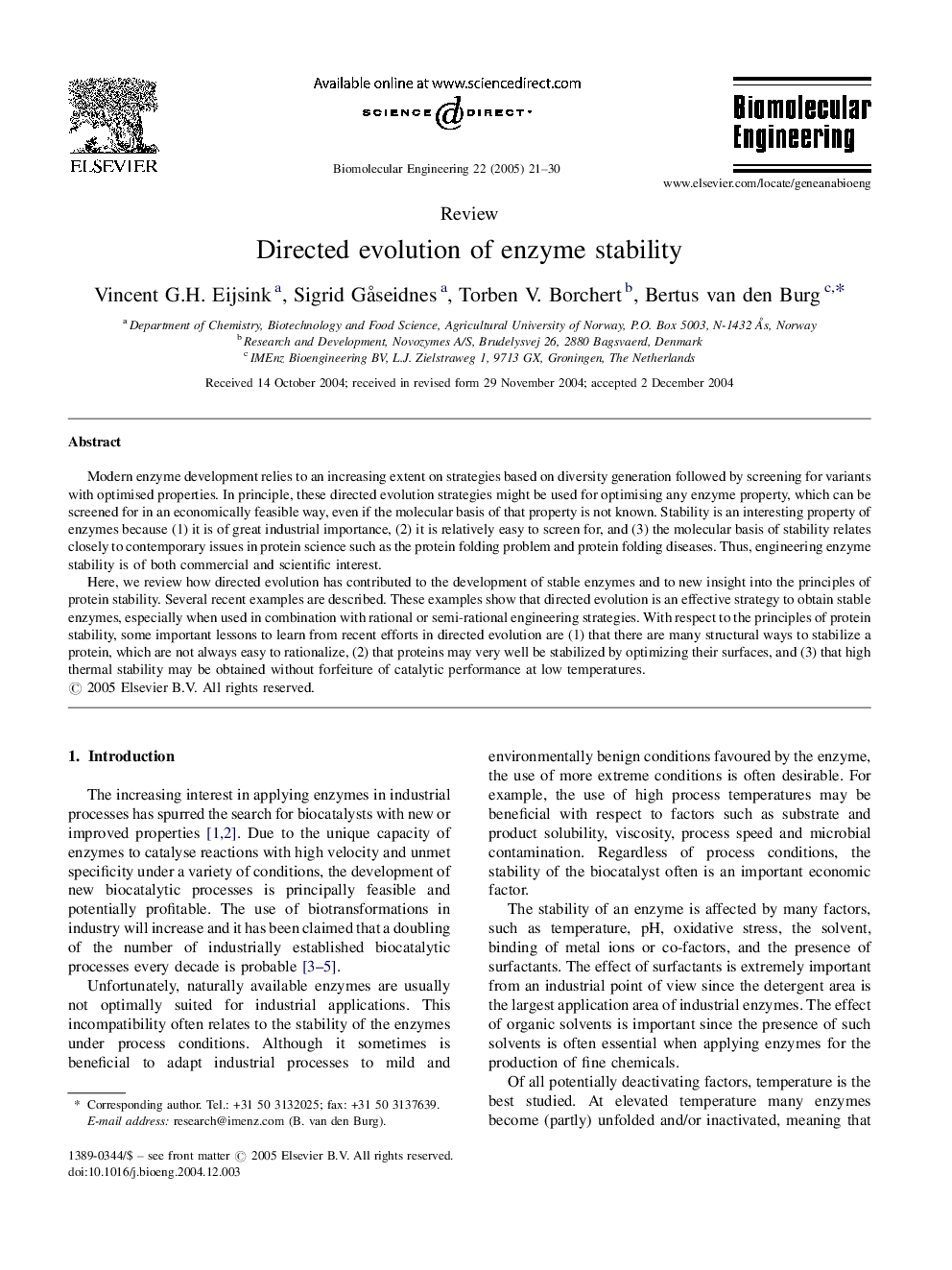| Article ID | Journal | Published Year | Pages | File Type |
|---|---|---|---|---|
| 9602410 | Biomolecular Engineering | 2005 | 10 Pages |
Abstract
Here, we review how directed evolution has contributed to the development of stable enzymes and to new insight into the principles of protein stability. Several recent examples are described. These examples show that directed evolution is an effective strategy to obtain stable enzymes, especially when used in combination with rational or semi-rational engineering strategies. With respect to the principles of protein stability, some important lessons to learn from recent efforts in directed evolution are (1) that there are many structural ways to stabilize a protein, which are not always easy to rationalize, (2) that proteins may very well be stabilized by optimizing their surfaces, and (3) that high thermal stability may be obtained without forfeiture of catalytic performance at low temperatures.
Related Topics
Physical Sciences and Engineering
Chemical Engineering
Bioengineering
Authors
Vincent G.H. Eijsink, Sigrid GÃ¥seidnes, Torben V. Borchert, Bertus van den Burg,
